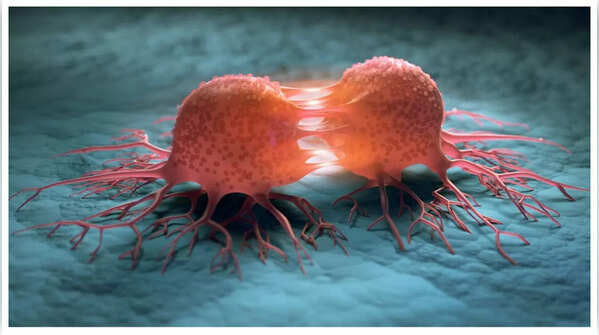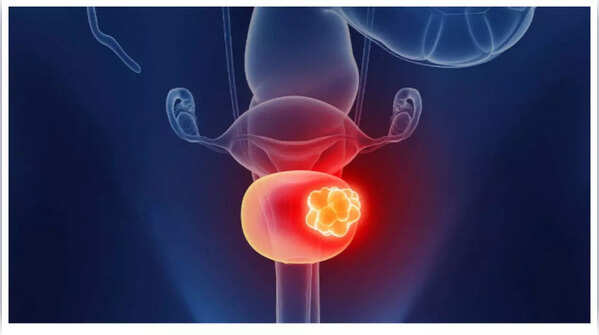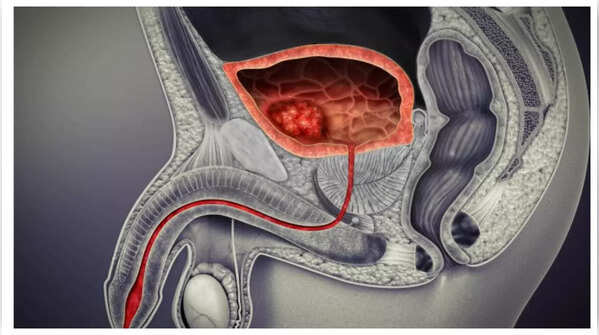Bladder cancer, characterized by the formation of cancerous cells within the bladder tissues, is more prevalent in men over the age of 55. While the presence of blood in the urine (hematuria) is often cited as the primary indicator, other less conspicuous symptoms can easily be overlooked in the initial stages. Recognizing these subtle signs is crucial for early detection and treatment. Here are five such symptoms that warrant immediate attention.

One of the earliest indicators of bladder cancer can be a noticeable increase in the frequency of urination. This may manifest as needing to urinate more often than usual, despite no change in fluid intake, or experiencing a sudden, intense urge to urinate even when the bladder is not full. This symptom is often mistaken for a urinary tract infection (UTI) or an overactive bladder, delaying its recognition as a potential sign of cancer. Persistent changes lasting for weeks, especially when accompanied by other symptoms, require medical evaluation to identify any irritation or abnormal growths within the bladder.

Experiencing pain or a burning sensation while urinating is another symptom often attributed to common infections like UTIs. However, bladder cancer can induce inflammation or irritation of the bladder lining, resulting in discomfort during urination. Unlike typical UTIs that usually respond well to antibiotics, pain associated with bladder cancer may persist or recur repeatedly after treatment. If painful urination is accompanied by other symptoms, such as blood in the urine or frequent urination, seeking medical advice is essential.

Bladder cancer can sometimes create a persistent sensation of needing to urinate immediately, even when the bladder is nearly empty. This sensation can be frustrating, as it provides no relief after using the restroom. The underlying cause is that tumors or abnormal growths within the bladder can irritate nerves or reduce the bladder's capacity, sending false signals to the brain. If this feeling persists or intensifies, it should be promptly evaluated, as it may indicate bladder abnormalities, including cancer.

While early-stage bladder cancer may not cause pain, as the disease advances, discomfort or aching may develop in the lower back or pelvic area. This pain is often described as dull and persistent, and can be easily mistaken for muscle strain or other common conditions. Pain in these areas can indicate that the cancer has spread deeper into the bladder wall or surrounding tissues. Unexplained lower back or pelvic pain, particularly when accompanied by urinary symptoms, should not be ignored.

Although visible blood in the urine is a well-known symptom, the urine may sometimes appear normal while still containing small amounts of blood detectable only through laboratory tests. This condition, known as microscopic hematuria, may present as an "off-color" urine rather than a distinct pink or red hue. Because it lacks obvious signs, microscopic blood in the urine often goes unnoticed unless a urine test is conducted for other reasons. Individuals with risk factors, such as smoking, exposure to harmful chemicals, or a family history of bladder cancer, may benefit from regular urine tests to detect these hidden signs early.
Sources:
Mayo Clinic, Cleveland Clinic, The National Cancer Institute
Newer articles
Older articles
 Hetmyer's Heroics: Orcas Stun MI New York with Last-Ball Six in Record-Breaking MLC Chase
Hetmyer's Heroics: Orcas Stun MI New York with Last-Ball Six in Record-Breaking MLC Chase
 Android Users Face Critical Security Risks: Update Your Devices Now, Warns Government Agency
Android Users Face Critical Security Risks: Update Your Devices Now, Warns Government Agency
 Greg Chappell Hails Rishabh Pant's "Revolutionary" Batting, Likens Him to Gilchrist
Greg Chappell Hails Rishabh Pant's "Revolutionary" Batting, Likens Him to Gilchrist
 Dog-Sized Dinosaur Fossil Unearths New Insights into Prehistoric Life Alongside Giants
Dog-Sized Dinosaur Fossil Unearths New Insights into Prehistoric Life Alongside Giants
 West Indies Captain Chase Slams Umpiring After Test Loss, Demands Accountability
West Indies Captain Chase Slams Umpiring After Test Loss, Demands Accountability
 IRCTC's AI Chatbot, AskDisha 2.0, Streamlines Train Ticket Booking, Refunds & Information
IRCTC's AI Chatbot, AskDisha 2.0, Streamlines Train Ticket Booking, Refunds & Information
 Freestyle Chess India Event Scrapped Due to Sponsorship Issues; Carlsen Absence Confirmed
Freestyle Chess India Event Scrapped Due to Sponsorship Issues; Carlsen Absence Confirmed
 Moto G54 Gets Significant Price Drop in India: Check Out the New Affordable Price Tag
Moto G54 Gets Significant Price Drop in India: Check Out the New Affordable Price Tag
 New Zealand Cricket Announces Packed 2025-26 Home Schedule Featuring Australia, England, West Indies & South Africa
New Zealand Cricket Announces Packed 2025-26 Home Schedule Featuring Australia, England, West Indies & South Africa
 Converting JPG to PDF: A Comprehensive Guide for Preserving Image Quality and Ensuring Accessibility
Converting JPG to PDF: A Comprehensive Guide for Preserving Image Quality and Ensuring Accessibility